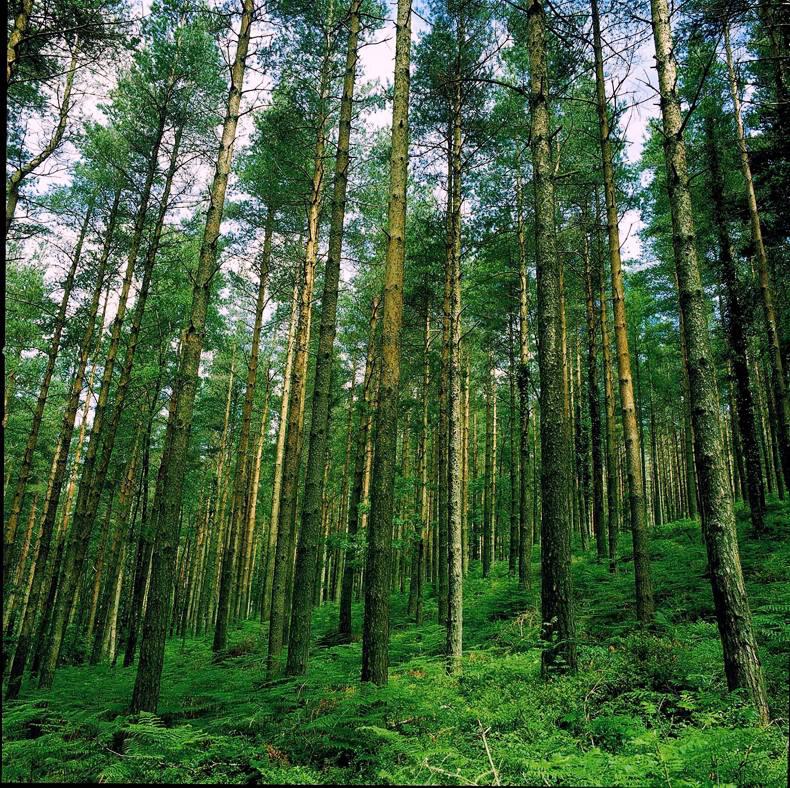The December 2018 Forestry Monthly Report (FMR) results show that afforestation continues to fall.
The programme, now at 4,025ha (Table 1), is less than half the 2010 returns.
There is little doubt now that forestry companies and foresters are switching their resources from planting to wood mobilisation, including road construction and harvesting – especially clearfelling – where licence approval exceeded 14,000ha for Coillte and private forests, which is the highest on record.
FMRs issued by the Forest Service, Department of Agriculture, Food and the Marine (DAFM), provide data for private afforestation and harvest roading, while felling licence applications and approvals are provided for both Coillte and private forest owners.
Afforestation
Afforestation is the area of most concern as it has fallen to 4,026ha compared with the 7,205ha proposed for 2018 in the Forestry Programme 2014-2020. This is the lower planting programme since 1950.
Form I submissions, the first expression of interest in planting, have also decreased.
These have fallen steadily from a high of 19,967ha in 2013 to 8,623ha last year.
Technical approvals amounted to 6,964ha last year, but only translated to 4,025ha of actual planting.
Forestry companies continue to claim that the delay in receiving approval is a contributory factor in the eventual slow take up of the grant.
Most foresters and representatives of forest companies contacted maintain that the forestry programme has to be target-driven.
In other words, if the programme is 7,205ha for 2019 and 8,290ha for 2020, then the Forest Service inspectorate, along with forestry companies and nurseries, should aim to achieve these targets.
As recently as 2002, over 5,000ha were planted in counties Cork, Kerry and Limerick – 1,000ha more than all 26 counties achieved last year.
While statistics for these three counties are not available for 2018, it is unlikely that afforestation will exceed 1,000ha.
Targets are neither mentioned in the midterm review of the 2014-2020 forestry programme nor in the two reviews of Food Wise, the 10-year strategy for the agri food industry.
The strategy identifies the opportunities for forestry in “employment growth” and through the “increased contribution of forest-based biomass, carbon sequestration and wood products use [in] climate change mitigation”.
Food Wise includes the recommendation “to support long-term sustainable roundwood supply through an increase in the annual afforestation level to 15,000ha from 2021”.
How this level of planting can be achieved in two years is not mentioned in the review, which is astounding given the enormity of this challenge, especially against the backdrop of the current underperforming afforestation programme.
Wood mobilisation
Wood mobilisation is a major challenge in private forest management, not just in Ireland but throughout Europe.
Sustainable Innovative Mobilisation of Wood (SIMWOOD), an EU initiative, estimates that up 300million m3 of timber are lost to the European forest industry annually due to poor or non-management.
Harvesting roads
Forest road construction demonstrates active forest management as well as being a good indicator of short-term timber harvesting. Last year 74km of harvesting roads were constructed, compared with 91km in 2017.
The planning process is inhibiting progress in road construction and there are delays in receiving approval, which forestry companies and timber processors regard as unacceptable. Last year, applications for 287km of roads were received, but only one in four made it to construction – compared with one in two in 2017.
While acknowledging that 74km of roads is a significant programme, claims that timber mobility have been hampered due to lack of sufficient roading are justified, so there is room for improvement and delivery as there is a budget available to support a major forest roads programme.
Felling licences
Felling licence applications and approvals are reliable indicators of wood mobilisation in Ireland, especially when the licences apply to clearfelling.
Apart from 2014, when clearfelling licences peaked due to windblow caused by Storm Darwin, annual clearfell licence approvals average 2,200ha.
However, applications increased to a record 5,973ha for clearfells in 2018, with 4,420ha approved.
Approvals for Coillte clearfells reached 9,736ha last year – a record high for the company.
Annual licence applications and approvals for Coillte are difficult to evaluate as block applications often straddle a number of years.
However it is clear when licence trends are analysed, there is little delay by the Forest Service in issuing licences for Coillte thinnings and clearfells.
Clearfells are the lucrative periods in a forest cycle.
It is important that felling licences are issued quickly so that growers can respond to market conditions and plan reforestation.
There were still 1,500ha of applications awaiting approval at year end for the private sector, which is too high.
A number of foresters who have contacted the Irish Farmers Journal report delays of over six months, while one forester who applied for a licence in March 2018 is still awaiting approval.
Last year 93% of Coillte’s clearfell applications were approved by the Forest Service, compared with 73% from the private sector.
A similar approach in issuing felling licences to the private sector would be welcome, especially for forests approaching final harvest.






 This is a subscriber-only article
This is a subscriber-only article










SHARING OPTIONS: